Editor’s note: This review was published by our colleagues across the pond, at Hagerty US. Given the Civic Type-R’s following in the UK, we had to share it here, too! James Mills.
It’s a car-review cliché whenever a new hot hatch hits the market to say that it’s finally “grown up” or “matured.” You may be tempted to believe that about the 2023 Honda Civic Type R. After all, the last generation’s boy-racer outfit is gone in favour of a more subdued look. But make no mistake – this new Type R is cut from the very same cloth as its predecessor.

Honda has simply enjoyed the benefits of a much-improved Civic platform, smoothed over the outgoing car’s few kinks, and dialled in its behaviour and response. After driving the new Type R on mountain roads outside Sonoma, California, as well as on the track at Sonoma Raceway, it’s hard to deny that Honda hasn’t improved this already great machine in every meaningful manner.
The arrival of any new Type R Honda is a momentous occasion, but the outgoing iteration hit the scene with quite a lot more fanfare. Why? Because that model, launched in 2016, was the first Civic Type R ever sold on U.S. shores. Prior to that, Americans’ only exposure to this flavour of high-performance Honda was the high-revving, race-bred, stripped-out Integra Type R of the late 1990s. People went bananas when the Civic Type R – offered in Japan and Europe, but long accessible to US fans only in video games like Gran Turismo – was in the showroom at their local Honda dealership.
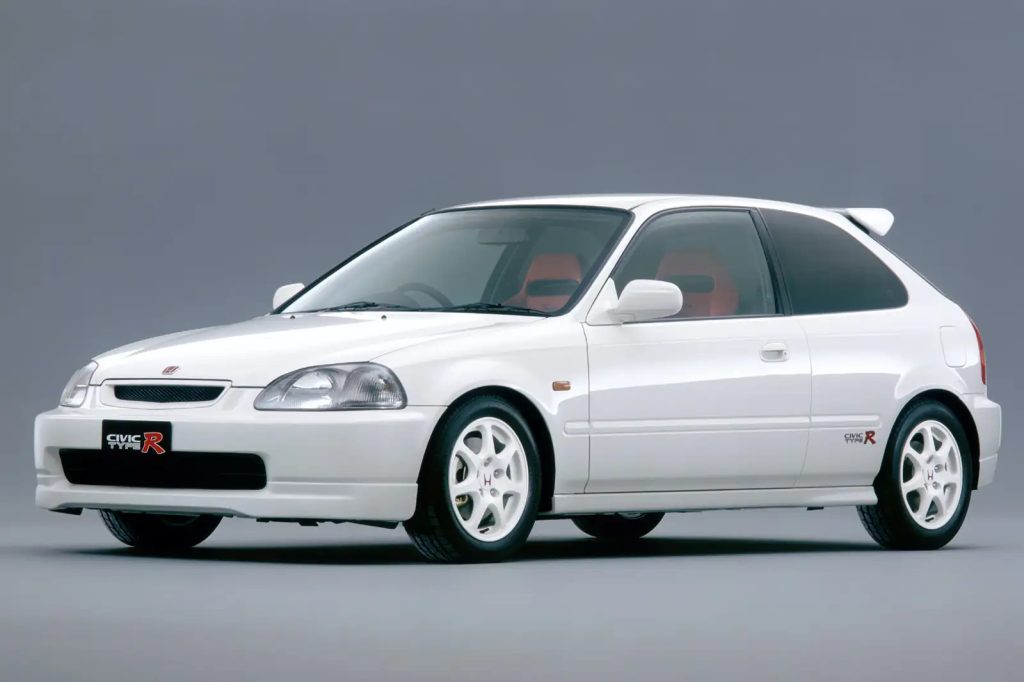
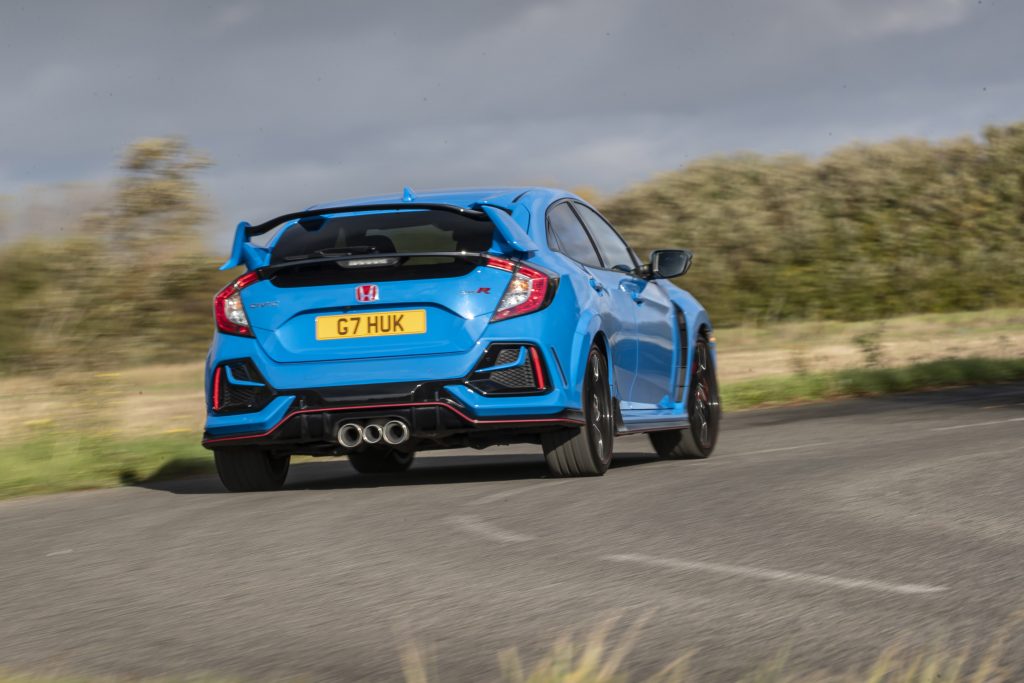
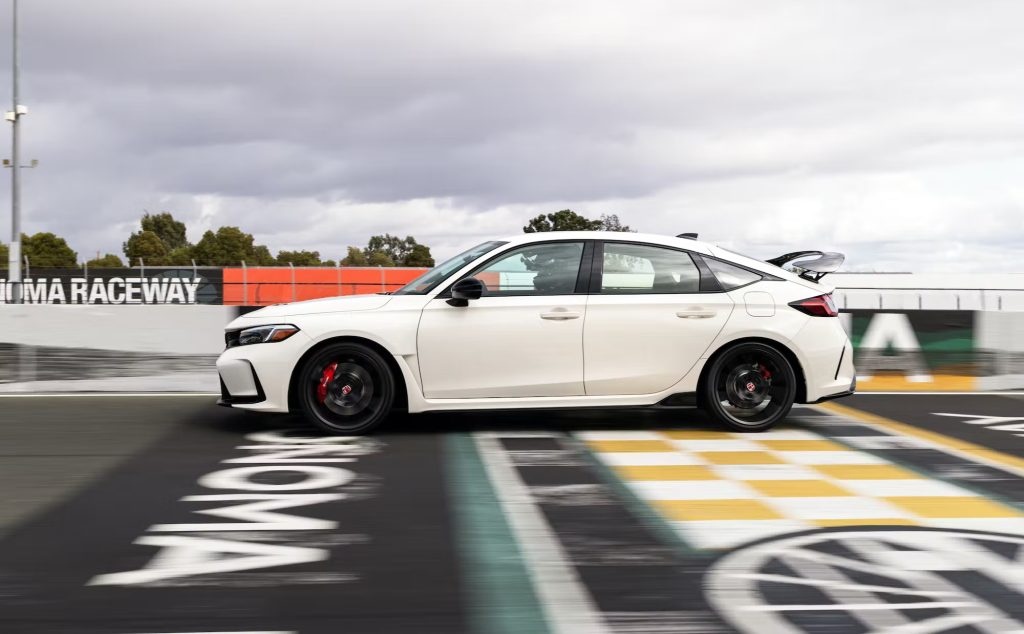
That Type R, based on the tenth-generation Civic hatchback, lived up to the hype. When new, it set the record for the fastest front-wheel-drive car around Germany’s Nürburgring race track. A unique “dual-axis” front suspension design all but eliminated torque steer. Yet despite the Type R’s prodigious capabilities, the car retained its inherent Civic-ness – comfortable, practical, and everyday-driveable. Sure, it looked like a 12-year-old designed it in the back of his social studies notebook, but the adults willing to pay £30,000 for a Honda hatchback arguably wanted to experience the dream car of their youth.
More sedate styling is a common personality trait across Honda’s recent lineup, and the result in the Type R is a car that looks much more of one piece and not tacked-on with needless vents and arch flares. Nevertheless, only the front doors and roof are shared with the ordinary Civic hatchback. The effect in person is not so dramatic, but next to a regular Civic, the Type R has more of a magnetic presence. The new spoiler, if there is any design misstep, doesn’t quite visually mesh with the rest of the vehicle, but it no longer blocks the driver’s view out of the rear glass.
On paper, the engine doesn’t seem like a dramatic upgrade in performance. Whereas the outgoing Civic Type R, launched in 2017, served up 306bhp and 295lb ft of torque from its 2.0-litre turbo-four, the new car boasts 325bhp and 310lb ft from an evolution of the same K20C engine. The increased output is in part thanks to a new turbocharger design, with 10 percent better intake airflow, and a redesigned exhaust with 13 percent better flow.
The biggest update, however, is to the cooling system. Owners of the outgoing Civic Type R reported heat-soak issues under extreme track driving conditions that prompted Honda to increase the grille opening by 13 percent and update the radiator core for the car’s mid-life facelift. The 2023 car keeps things chilly with a 48 percent larger grille opening, bigger radiator, more robust fan, and longer intercooler core.
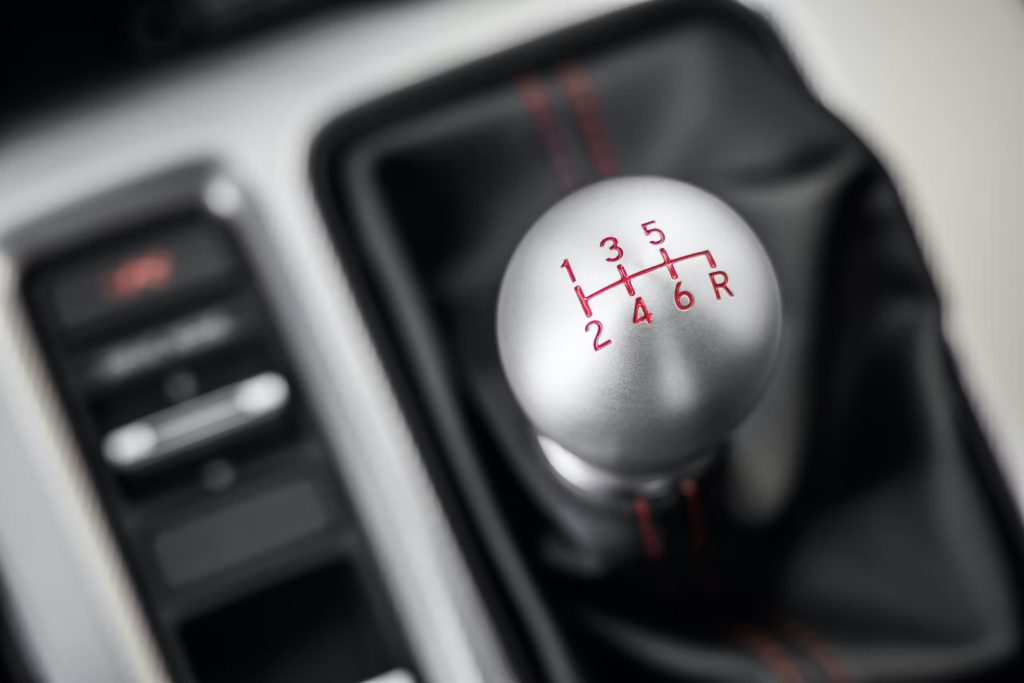
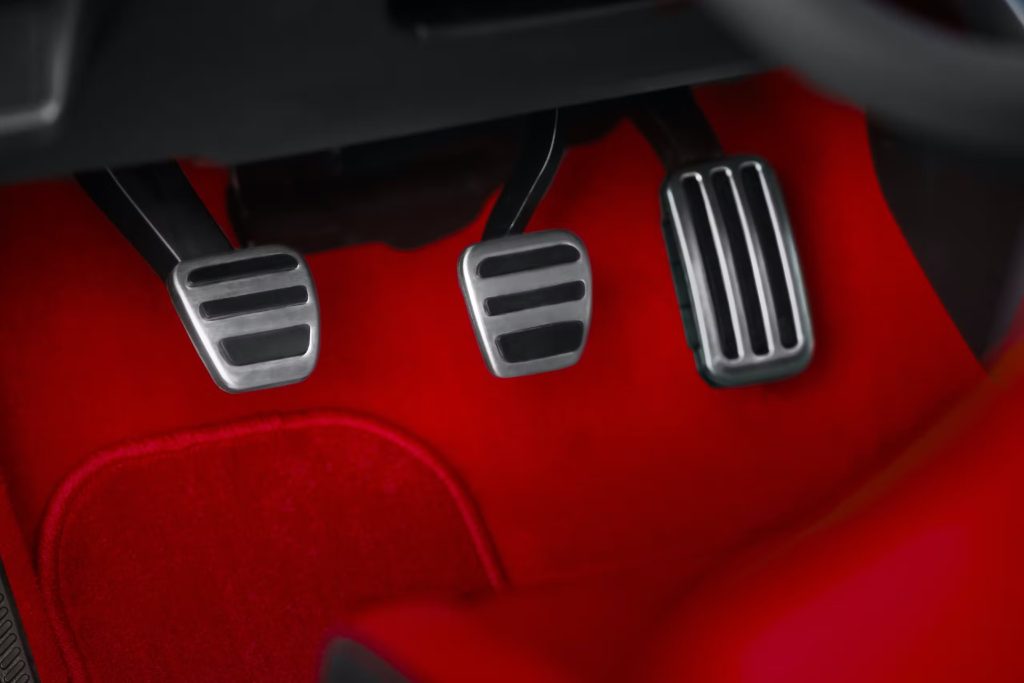
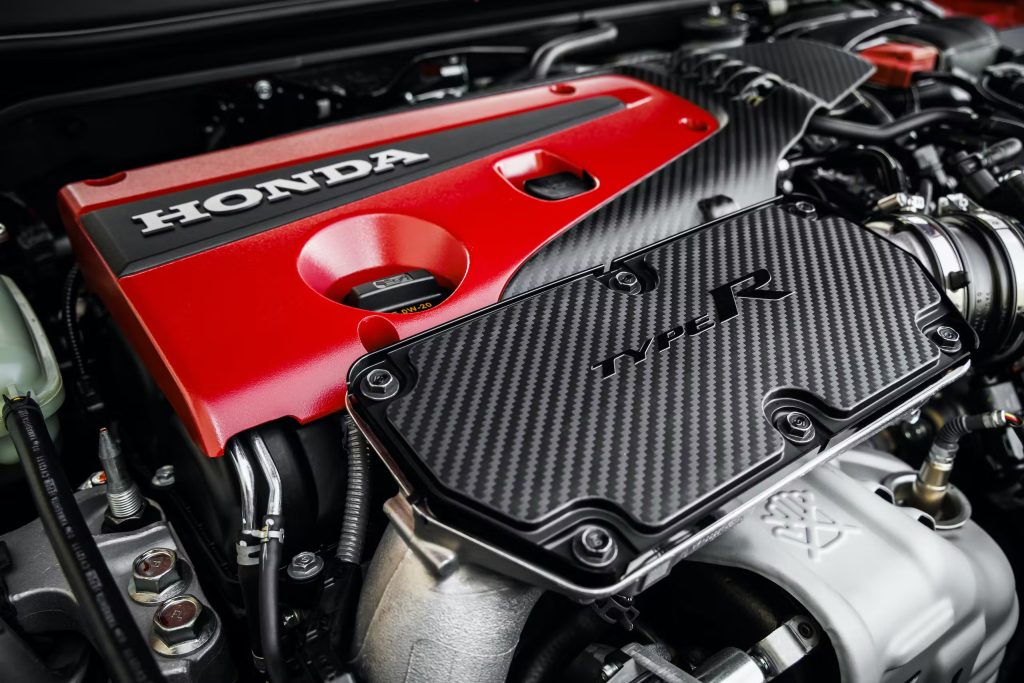
You feel the difference in engine performance on the road. Throttle response in the low end is snappier than before, thanks largely to an 18 per cent lighter flywheel, and there’s considerable punch when boost and peak torque hit at 2600rpm. Our drive took place on a wet and cold morning, following a considerable storm the night before, which meant plenty of large rocks and patches of gravel lurking around corners. Even going uphill and regularly slowing to avoid hazards, we could leave the transmission in third gear and rely on low-end torque to keep momentum. The Type R didn’t need more grunt, but the 15 extra lb ft is most welcome. The car’s personality transitions from basic commuter to slick canyon carver with seamless confidence.
What the last Type R really demanded was a better engine note, which Honda addressed with the redesigned exhaust and active valve system. The four-cylinder sounds noticeably more eager and enthusiastic under acceleration, although Honda engineers did admit that engine noise is computer-synthesised and pumped in through the speakers. The Type R lacks the active noise cancellation feature present in other Civics, so it’s true that you can better hear the exterior exhaust note from inside the car. More pleasant than before? Sure, but the bar was pretty low. Nobody will buy a Type R because it sounds great.
This chassis is the Type R’s golden ticket. Thanks to a number of refinements, along with the new eleventh-gen Civic architecture, Honda managed to preserve the hot hatch’s athleticism and reflexes while taming some of its twitchiness during hard driving. Wheelbase grows 1.4 inches, while the track width increases 1 inch up front and 0.75 inches in the rear. Rather than stick with 20-inch wheels, Honda downsized to 19s and opted for a 0.5-inch wider footprint.
Reduced weight was a major reason for the decision, but the smaller rims also lower the car’s centre of gravity and ride height. Big impacts over potholes no longer make you wince. The 20mm wider tyres – a bespoke 265/30 R19 Michelin Pilot Sport 4S – offer more grip than the Continentals did. (A spokesperson from Honda Japan indicated that customers demanded Michelin tyres because of the brand’s “reputation for technical prowess.”)
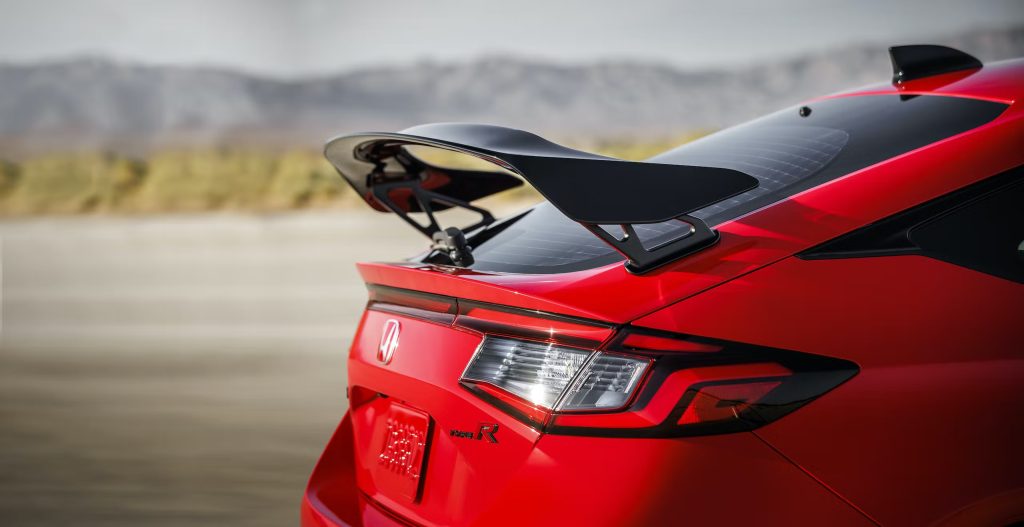
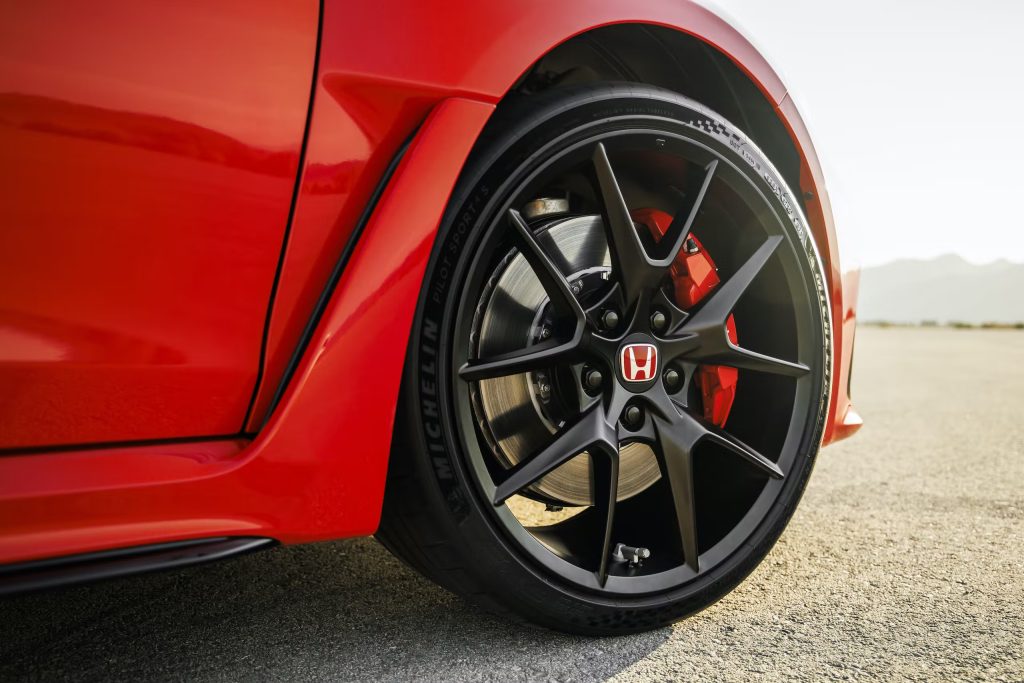
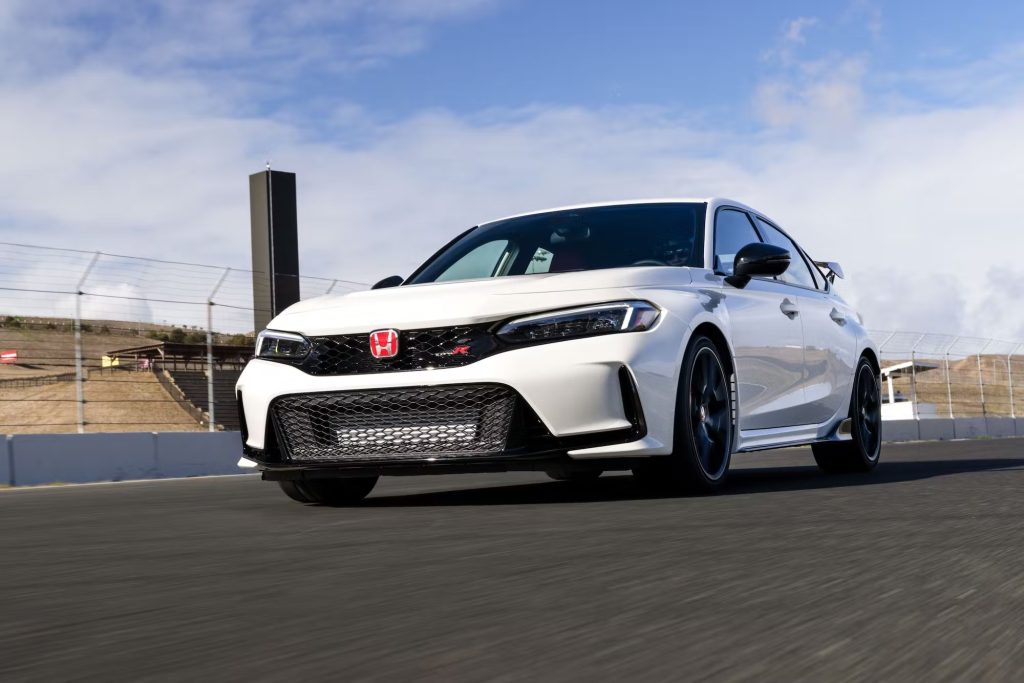
Track-focused Michelin Cup 2 tyres are available for order at dealers, as well. Honda wanted to show off the new rubber on the California drive, but with temperatures hovering between 5–10C, it was deemed a safety hazard. Still, we learned more about the chassis on Sonoma Speedway than on the road route.
Our first couple of sessions in the morning were mired in significant wet and cold, conditions which proved rather dicey on this highly technical circuit and its considerable elevation and camber changes. Honda asked us to go out initially in Comfort mode, the softest drive setting behind Sport and R+. (There is also a new Individual mode that allows for specific adjustments to steering, engine response, auto rev-matching behaviour, and adaptive dampers settings.) It’s a good thing, too. Traction and stability control saved our bacon in a handful of instances, and only later in the day, when temperatures rose and the track dried out, did we switch into R+, which dials back the threshold of intervention.
This is about as good as a modern front-wheel-drive car gets. You sit low, with plenty of glass around to give a sense of clear visibility. Turn-in is lively, and the steering communicates plenty about what the front tyres are doing. The helical mechanical limited-slip diff carries over from the last generation, allowing for fairly generous throttle input during corner exit without pushing the front end wide. There’s almost nothing in the way of body roll, and slight adjustments to throttle and steering in the mid-corner help manage the rear’s willingness to subtly rotate. Once you adjust to the surprisingly sensitive throttle, brake, and wheel, the car is more forgiving than it initially seems.
Sonoma isn’t particularly hard on brakes, but we never had a problem and enjoyed the firm pedal feel. Shifting is a lovely affair, as well, with a nicely weighted gearknob and clearly spaced gates. Honda’s chief engineer says that even better shift feel was a priority, prompting his team to cast the shifter body from aluminium rather than from plastic, as in the standard Civic. And, boy, were we grateful for the quick-acting auto rev-match; on one straight we missed a 3-4 shift and mistakenly entered second. The engine automatically screamed to high heaven, scaring us enough to keep the clutch pinned and avoid grenading the engine. Phew.
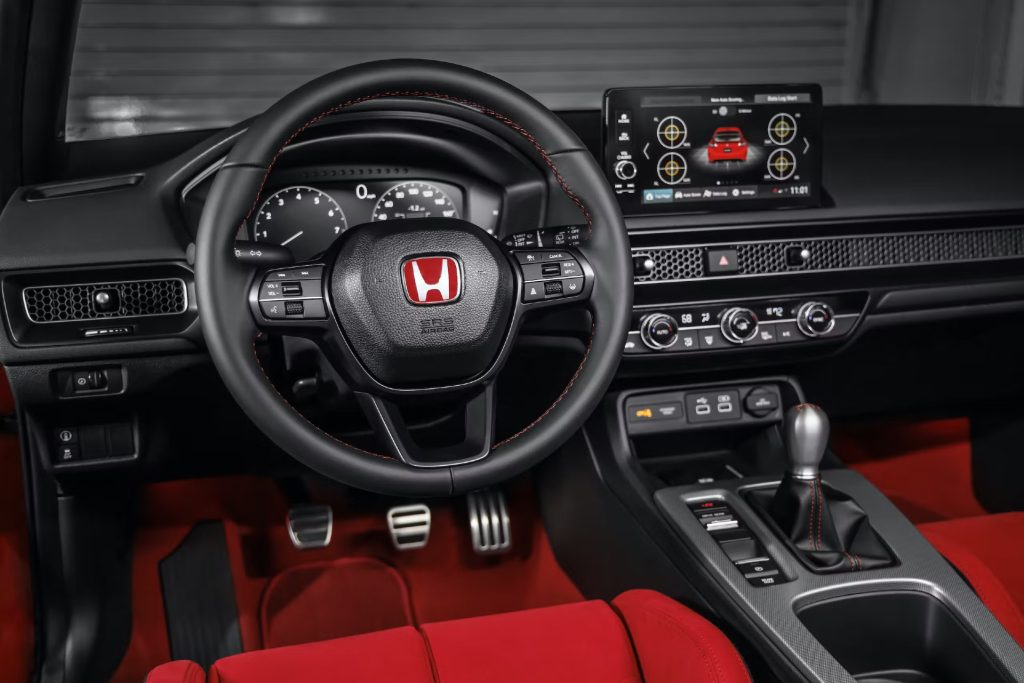
We got about 20 laps around Sonoma in total, all in a lead-follow setup in the wake of a pro driver. We’ll hold off on any definitive statements about the car’s capability until we can turn loose a bit more freely, but our initial impression was positive. This car is agile, responsive, fun to drive fast, and reasonably forgiving of mistakes. We can’t ask for much more without expecting to significantly impact daily drivability, which is a hot-hatch non-negotiable.
Perhaps the most meaningful update to the ordinary Civic for this generation is the interior, and the Type R experience certainly benefits from those changes. The instrument cluster is now all-digital but simple to read and understand regardless of what display mode is on the screen. The F1-style shift lights mounted at eye level make every rev to redline feel special. Whereas the outgoing Type R steering had a suede microfibre wrap with red inserts, the new helm is leather-wrapped. It feels great in the hands and is sized appropriately, neither dainty nor cartoonishly fat.
Aside from the all-red bucket seats, aluminium trim around the shifter, and a handful of other small touches (the serialised plate is pretty cool), this isn’t far off from what you get in the Sport Touring trim [UK editor’s note: that one’s US-only, sadly – all our conventional Civics are significantly less sporty these days…]. That’s a good thing, and even with the Type R’s $43,990 price tag [UK prices are confirmed at £46,995], you won’t feel shortchanged.
The Golf R uses better interior materials but suffers from a terrible user interface, and the cheaper Elantra N is more feature-rich. Neither come even close to the Civic’s sheer clarity and ease of use. The back row is also genuinely huge, and with the seats folded there is surely enough room for a full set of wheels and tyres. If we have any complaint, it’s that the front seats should really be heated in a car at this price point. At the same time, they’re immensely supportive and all-day comfortable. The thigh pad is angled slightly upward for additional support, and it’s even split into two cushions accommodate body motions during high-g driving.
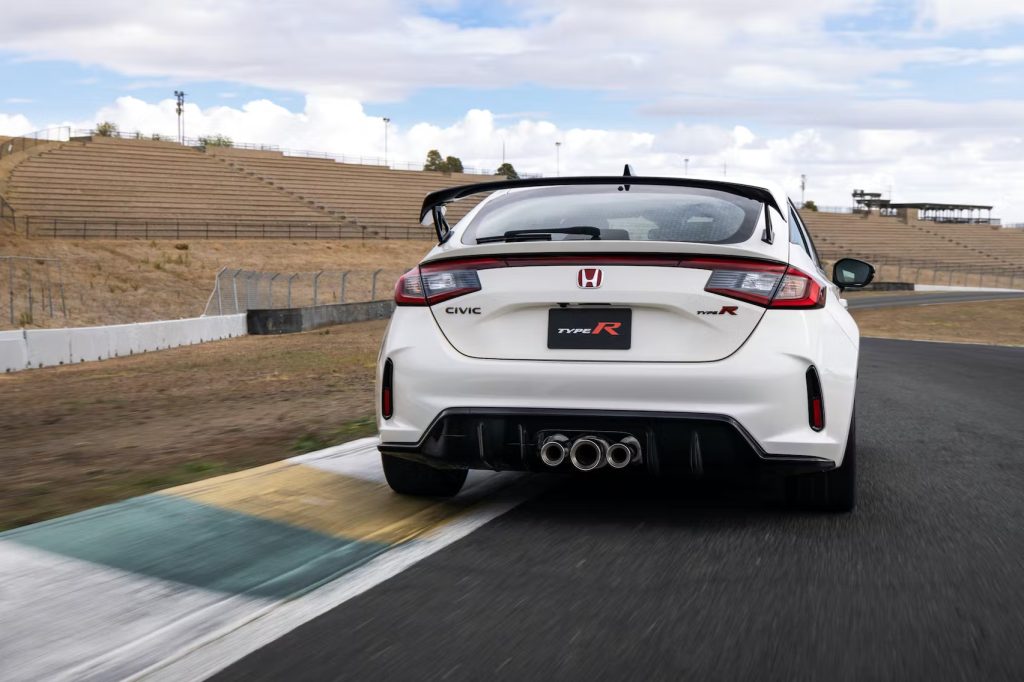
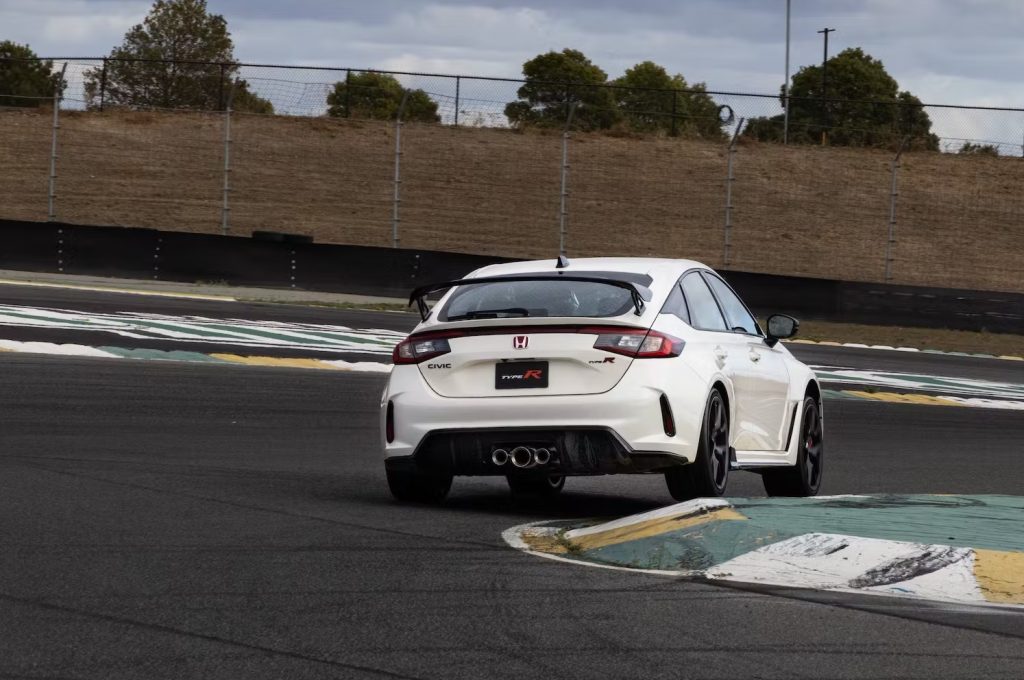
At the risk of gushing, there’s little to nitpick about this latest Type R, leaving aside the unavoidable dealer markups [That, thankfully, is something we don’t need to deal with quite as much in the UK. Ed]. Honda improved essentially all of the previous car’s precious few shortcomings, increasing the ride comfort, upping the engine output, refining the cooling system, and making the interior a lot more user-friendly.
Good thing, too. Toyota’s rally-bred, turbo three-pot GR Corolla [Another US-only property. Ed] is a highly compelling hot hatch alternative. For its part, Honda is happy to play in the sandbox with some company. “We welcome the competition!” Honda president & CEO Noriya Kaihara told us. “It encourages us and reminds us to continue to build special cars like the Type R.”
A little friendly rivalry? We like it. If anything, it’ll make sure the rowdy-as-ever Type R doesn’t grow up too fast.
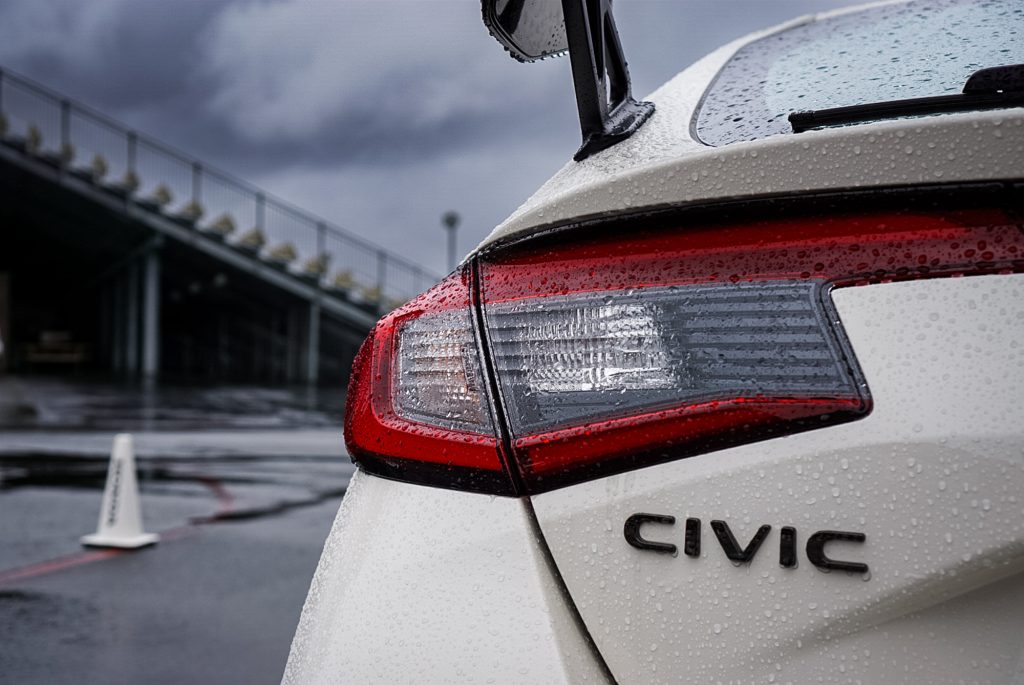
2023 Honda Civic Type R specs
Price: £46,995
Engine: Inline four-cylinder with turbo, 16-valve DOHC VTEC
Gearbox: Six-speed manual, front-wheel drive
Power: 325bhp @ 6500rpm
Torque: 310lb ft @ 2600–4000rpm
Weight: 1446kg
Fuel economy: 34.5mpg
0–60 mph: 5.4 seconds
Top speed: 171mph
Read more
Retro Rewind: Honda Integra Type-R vs Honda Civic Type-R
Your Classics: Shaun Carter and the Honda CRX he bought to relive his youth
10 road racers to give you that CSL feel for less








